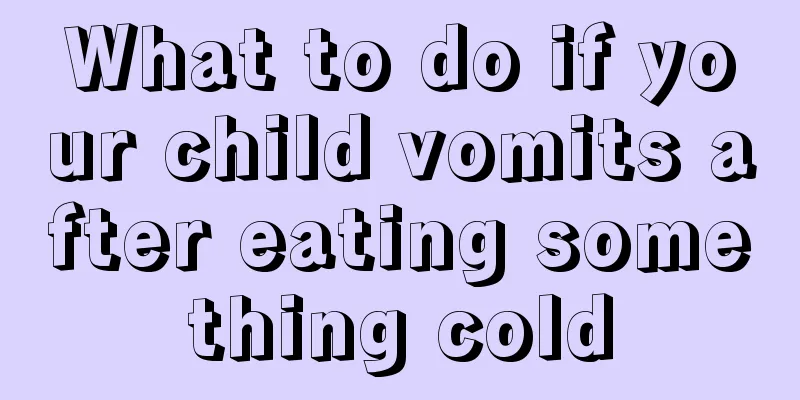What are the suitable exercises for children to grow taller?

|
Children's physical development characteristics are different at different stages, but there is a reference standard for height and weight for each age group. If a child is short or overweight, it may be due to improper feeding and care or lack of exercise. So, what are the exercises suitable for children to grow taller? Regarding this issue, let’s take a look at the introduction below. What kind of exercise can babies under 1 year old do to grow taller? If babies under 1 year old want to grow taller, they should combine active and passive exercises. Active exercise means helping your baby to do some exercises such as lifting his head, crawling, and turning over. Passive exercise is when parents give their babies small activities that are beneficial to their growth and development. For example, parents can give their babies some passive exercises such as baby exercises, massage and touch. You can also let your baby lie on the carpet or lawn, and do some exercises such as raising his head, turning over, crawling, and jumping to the beat of music, and play games such as pulling up to sit up, pulling toys with ropes, bending over to pick up objects, rolling a ball, and crawling to chase a ball. What kind of exercise can babies aged 1-2 years old do to grow taller? They can walk, run, jump, go up and down stairs, bounce a ball, jump with both legs, throw a ball and throw sandbags, and play games such as picking up leaves, squatting and playing with sand, kicking a ball, and walking with a puppy. What kind of exercise can a 2-3 year old baby do to grow taller? You can do exercises such as running, jumping, skipping rope, trampoline, hopping on one leg, climbing, going up and down stairs, and play games such as jumping with a ball, standing long jump, walking on tiptoe, catching a thrown ball, stepping on shadows, and standing on one leg. What kind of exercise can children over 4 years old do to grow taller? It is advisable to focus on projects that adjust motor skills and combine sports with games, which can not only increase children's interest in sports, but also improve their motor coordination ability. For example, let children cross the single-plank bridge, dance, throw handkerchiefs, play "Eagle Catches Chicken" in the outdoor play area. What kind of exercise can primary school children do to grow taller? It is advisable to focus on outdoor activities, such as swimming, playing ball, running, doing exercises, jogging, brisk walking, skating, cycling, various ball games, etc. This type of exercise is best performed 3-5 times a week, 20-30 minutes each time, no more than 2 hours a day, and can be divided into 2-3 times. Jumping exercises such as skipping rope, jumping rubber bands, frog jumps, and high jumps can give the lower limbs rhythmic pressure, and adequate blood supply will accelerate bone growth. Do jumping exercises 1-3 times a day. 5-10 minutes each time is appropriate. What are the exercises suitable for children to grow taller? The appropriate exercises for children at different stages are different. For very young children, it is enough for them to be active and lively every day. When the child is a little older, he can engage in some more difficult sports. In short, more exercise is helpful for the child's physical development. |
<<: What are some exercises that help children grow taller?
>>: What to do if your one-year-old baby has tongue ulcers
Recommend
What to do if the child cannot digest the food
Children's spleen and stomach are not fully d...
How to prevent herpetic pharyngitis in children?
Herpetic stomatitis is caused by the herpes simpl...
Children pooping
For newborns, parents can judge whether the child...
Solutions to zinc deficiency in four-month-old babies
Zinc deficiency in babies will affect their norma...
Why does a two-year-old baby sneeze and have a runny nose?
If a two-year-old baby sneezes and has a runny no...
What to do if the child still coughs after recovering from pneumonia
After a child recovers from pneumonia, he or she ...
Children keep blinking, what's going on?
When parents find that their children are always ...
Can I still get chickenpox after getting the chickenpox vaccine?
Many parents believe that after giving their babi...
Autumn care for children: what are the precautions for autumn diarrhea
The so-called autumn diarrhea is a gastrointestin...
The child's skin is very rough
Generally speaking, children's skin is very d...
Can the green stool problem of babies be relieved?
The baby's feces sometimes turn green. Mother...
Diet therapy for night sweats in children
Night sweats are a very common condition in the h...
Symptoms of hand, foot and mouth disease in children
Hand, foot and mouth disease is a very common dis...
How to make chicken liver better for babies
Young babies are in the stage of symptom developm...
The harm of overfeeding infants and its preventive measures
In traditional concepts, overfeeding refers to a ...









